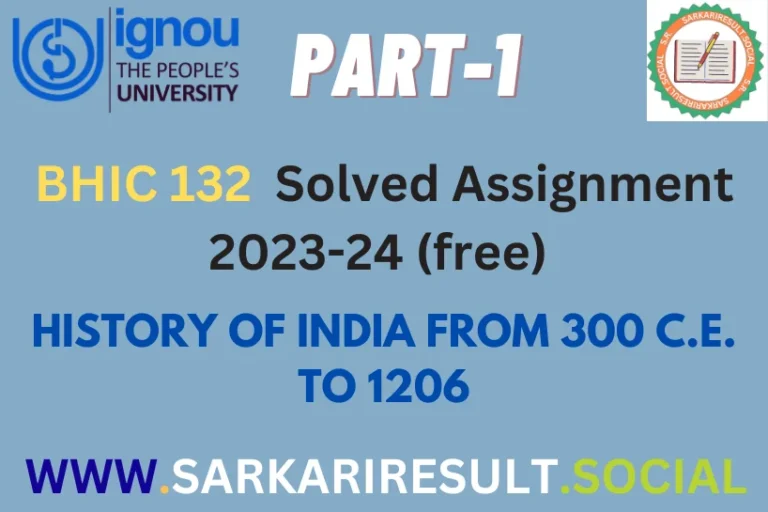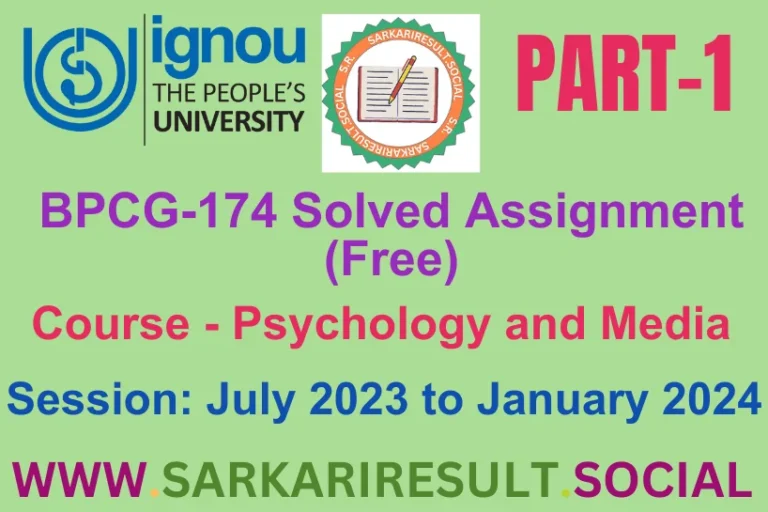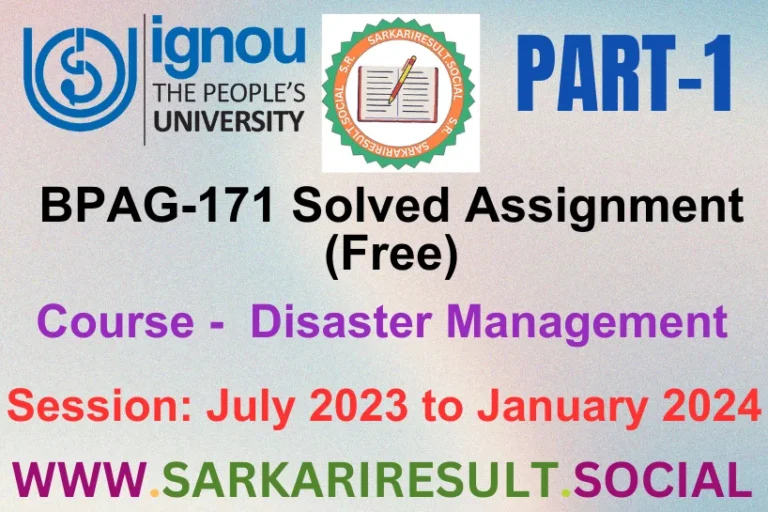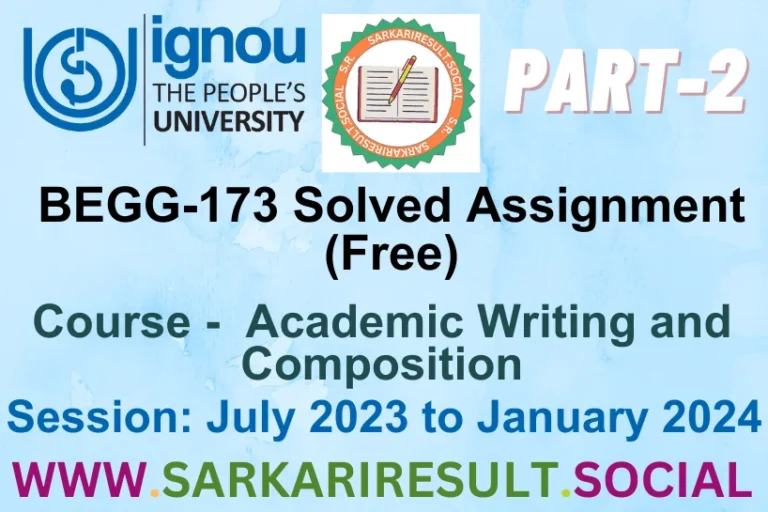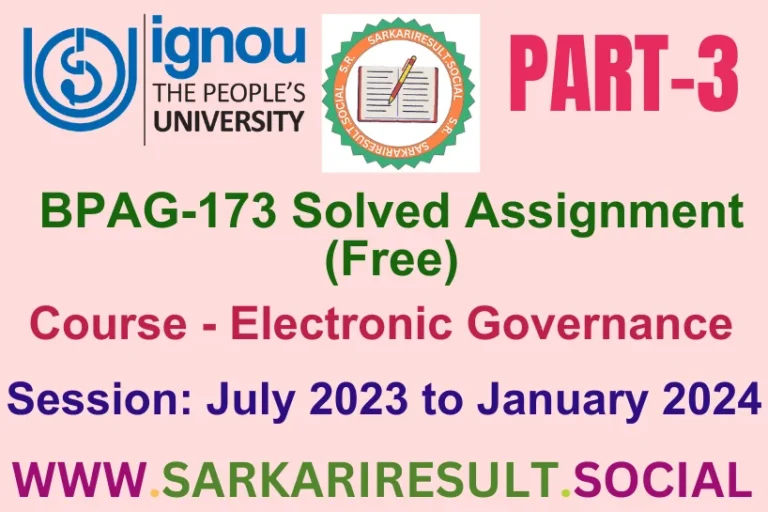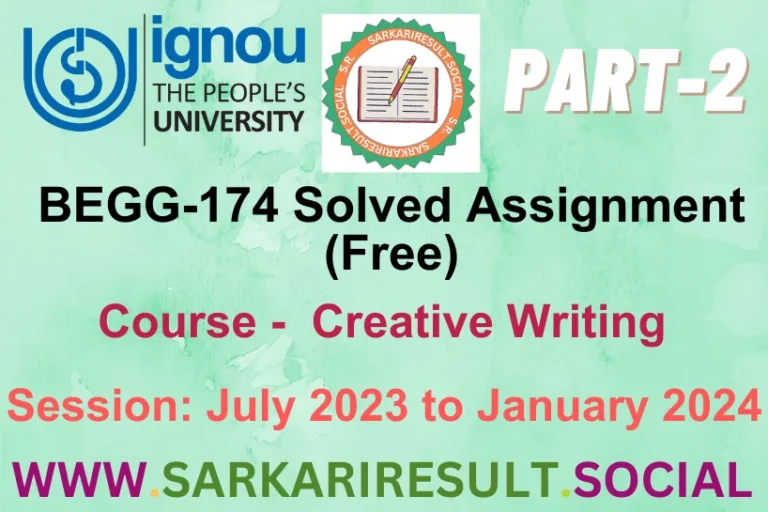BPCG 171 SOLVED IGNOU ASSIGNMENT FREE PART 3

Welcome to BPCG 171 SOLVED IGNOU ASSIGNMENT FREE PART 3 TMA. In Assignment – III, concise responses guide you through behavior characteristics, depth perception, problem-solving concepts, decision-making steps, and digital world learning. With just 100 words per question, these brief insights ensure a straightforward and successful completion of your assignments. Our IGNOU Solved Assignments 2024 for this section serve as your creative guide.

Answer the following questions in about 100 words each.
Q.6 Nature and characteristics of behaviour.
Ans. Behavior refers to actions or reactions of organisms in response to stimuli. It is shaped by a combination of genetic, environmental, and experiential factors. Characteristics of behavior include variability, adaptability, and purposefulness. Behavior is influenced by internal processes, emotions, and external stimuli, reflecting an individual’s unique responses to their surroundings.
It serves adaptive functions, allowing organisms to navigate and interact with their environment. The study of behavior is integral to fields like psychology and ethology, providing insights into human and animal cognition, emotions, and social interactions.
Q.7 Depth and distance perception.
Ans. Depth and distance perception refer to the ability to visually perceive the spatial relationships between objects in a three-dimensional environment. The human visual system achieves this through various cues, such as overlap, relative size, perspective, and shading. Binocular cues, relying on both eyes, provide depth information, while monocular cues, available to one eye, contribute to distance perception.
These perceptual mechanisms enable individuals to navigate and interact with their surroundings, crucial for activities like judging distances, catching objects, and overall spatial awareness.
Q.8 Concept of problem solving.
Ans. Problem-solving is the cognitive process of finding effective solutions to challenging or ambiguous issues. It involves defining the problem, analyzing relevant information, generating potential solutions, evaluating options, and implementing the best course of action.
Critical thinking, creativity, and logical reasoning are integral to effective problem-solving. It spans various domains, from mathematics to everyday life, requiring adaptability and persistence. Successful problem-solving enhances cognitive skills and decision-making, fostering a proactive approach to challenges.
Q.9 Steps of decision making
Ans. Decision-making involves a systematic process:
1. Identify the Decision: Clearly define the decision that needs to be made.
2. Gather Information: Collect relevant data and information related to the decision.
3. Identify Alternatives: Generate possible solutions or courses of action.
4. Evaluate Alternatives: Assess the pros and cons of each alternative.
5. Make a Decision: Choose the best alternative based on the evaluation.
6. Implement the Decision: Put the chosen solution into action.
7. Review the Decision: Assess the outcomes and adjust future decisions based on feedback. This systematic approach aids in effective and rational decision-making.
Q.10 Learning in a digital world.
Ans. Learning in a digital world involves acquiring knowledge and skills through technology-mediated resources. It leverages digital platforms, online courses, interactive multimedia, and collaborative tools. Access to vast information, flexibility in learning schedules, and interactive engagement redefine traditional educational paradigms.
Learners navigate a diverse range of digital content, fostering self-directed and personalized learning experiences. The digital world enhances connectivity, facilitates global collaboration, and prepares individuals for evolving technological landscapes, making education more accessible and adaptive.
Also See This: BPCG 171 SOLVED IGNOU ASSIGNMENT FREE PART 1

